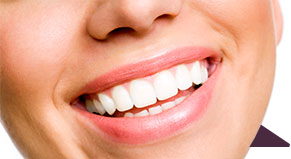Have People Always Cleaned Their Teeth Throughout History?
June 30th, 2016
 You might consider brushing and flossing your teeth everyday a pain. But it’s definitely not as painful as it used to be. Throughout history, humans have experimented with a variety of different tools and ingredients to clean their teeth, including bones and oyster shells. The toothbrushes, toothpastes and floss we use today were created relatively recently.
You might consider brushing and flossing your teeth everyday a pain. But it’s definitely not as painful as it used to be. Throughout history, humans have experimented with a variety of different tools and ingredients to clean their teeth, including bones and oyster shells. The toothbrushes, toothpastes and floss we use today were created relatively recently.
Let’s take a step back a few thousand years and take a look at how our ancestors used to try to keep their teeth in decent shape.
Ancient Toothbrushes
Some of the first evidence experts have found of toothbrushes dates back to 3,500 to 3,000 BC. Before that, people tended to use cloth and water to wash their teeth. They added abrasives like chalk and salt to keep their teeth polished.
Babylonians and Egyptians are thought to be two of the first groups of people to use a toothbrush-like tool. Archeologists have found twigs split and frayed at the end to create a sort of brush in the tombs of Egyptians. We can thank the Chinese for the invention of natural bristles in the 15th century. People in China created bristles from pig necks and attached them to bones or bamboo, which they used as handles to hold.
This Chinese toothbrush design caught on in Europe, as Europeans created their own version of toothbrushes with gentler horsehair bristles. Toothbrush design continued to improve, with William Addis creating a toothbrush handle from cattle bone and a brush with swine bristles in England around 1780. Bristles made with animal parts were finally replaced with nylon bristles in 1938.
Toothpastes and Powders Back in the Day
Toothpastes were used to keep our ancestor’s teeth and gums clean well before toothbrushes were created. Ancient Egyptians used ox hoof powder, burnt eggshells and ashes to keep their mouths clean and breath fresh. Greeks and Romans chose clean their teeth with rougher ingredients, like oyster shells and ground bones.
The Chinese tended to use ginseng, salt and herbal mint to keep their pearly whites clean. (We’ll take ancient Chinese toothpaste over Greek toothpaste any day.) These older toothpastes were actually more like powders. The more modern paste was created in the 1850s in England. Soap, chalk, betel nut, and crushed charcoal were among many ingredients used to create teeth-cleaning paste in England.
Flossing History
If you think flossing is hard today, try doing it with a pointed stick. (Actually, don’t. You could seriously injure yourself.) A few thousand years ago, our ancestors used to try to stick pointed sticks, horsehair, and twigs between their teeth to get food particles and other gunk out.
An American dentist named Dr. Levi Spear Parmly decided to improve on these ancient techniques with the introduction of waxed silk thread as floss. He also suggested that people floss every day. Unwaxed silk floss was created in 1882 and nylon replaced silk in dental floss in the 1940s.
Next time you don’t want to clean your teeth, just think about what the Greeks and Romans had to go through! Thankfully, we’ve come a long way. Nowadays, we have documented the proper brushing technique for healthy teeth and the best tools to get the job done. If you have any questions on your teeth- and gum-cleaning techniques, don’t hesitate to contact us!






 Website Powered by Sesame 24-7™
Website Powered by Sesame 24-7™